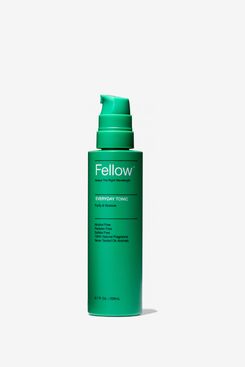The Strategist
The 9 Very Best Aftershaves
May 27, 2022
By: Lisa Corsillo
Aftershave was originally created as an alcohol-based antiseptic for disinfecting the little nicks and cuts you can get from shaving. But while alcohol does a good job of preventing infection, it tends to be very drying, and splashing it on freshly shaved skin can really burn. Luckily, aftershaves have evolved a lot over the years. Depending on your skin and facial-hair type, you now have your pick of cooling gels, soothing balms, and refreshing liquids that disinfect as well as hydrate, exfoliate, and tone skin — many of which are alcohol-free and actually feel good going on. Because everyone has a different set of post-shave skin needs, we asked 14 dermatologists and grooming experts to weigh in on the best aftershaves for a range of skin types.
If you already know what you’re looking for, use our clickable table of contents to skip ahead. But if you need a bit more guidance, read on for all of our experts’ recommendations.
What we’re looking for
Skin-type compatibility: According to Dr. Anna Guanche, dermatologist and founder of Bella Skin Institute, the best aftershave for you depends on your particular skin type. “Everyone’s skin is different and will react and respond to different types of aftershaves,” she says. Whether you’re prone to dryness, razor burn, acne and ingrown hairs, or just want to maintain a healthy glow, there is an aftershave out there for you. Folks with dry and sensitive skin should look for soothing ingredients like aloe, vitamin E, and shea butter, and stay away from harsh ingredients like alcohol and menthol. But if you have a more oily complexion or tend to get a lot of ingrown hairs, a formula with astringent qualities could be very beneficial. Ingredients like witch hazel and eucalyptus oil are known to kill bacteria, tighten pores, and give you a more matte complexion. If you’re not sure what skin type you have, a quick trip to the barber or to see a dermatologist will help you gain a better understanding of what your skin needs to look and feel its best.
Moisturizing ingredients: Dr. Nikhil Dhingra of Spring Street Dermatology in New York says that moisturizing after shaving is “quite possibly the most critical step in post-shave care.” When you shave, he says, you’re stripping the skin of its natural oils. So if you don’t add any moisture back in, your skin is far more likely to feel uncomfortable after shaving, potentially leading to ingrown hairs, dryness, and razor burn. Regardless of your skin type, the aftershave you use should contain moisturizing ingredients. As with facial moisturizers, the dryer your skin is, the richer or thicker you’ll want your post-shave moisturizer to be. Ingredients like shea butter and avocado oil are good examples of rich, moisturizing ingredients. If you have trouble with frequent breakouts, you’d be better off using something more lightweight, like glycerin, that won’t clog pores.
Balm versus liquid versus gel: Mark Miguez of Friend of a Barber says that he can tell just by feeling the texture of an aftershave with his fingers whether he will like using it or not. He is strongly in favor of balms over liquids or gels because he finds they are the most moisturizing of the bunch. But others might find a balm-style aftershave too thick and prefer a cooling gel or liquid. Because you can’t feel each of the below products through your screen, we’ve noted whether each one is a balm, a liquid, or a gel.
Best aftershave for aging skin
Good for dry, aging skin | Eucalyptus, arnica, and vitamin C | Liquid
When it comes to aging skin, Dhingra says you may need to amp things up with more than one product — think layering. “Your skin dries out as you get older, and that dryness may set you up for inflammation after shaving,” says Dhingra, who recommends starting your post-shave routine with this soothing anti-inflammatory tonic from Fellow Barber. It contains cooling eucalyptus as well as arnica, which decreases inflammation, and skin-brightening vitamin C.

